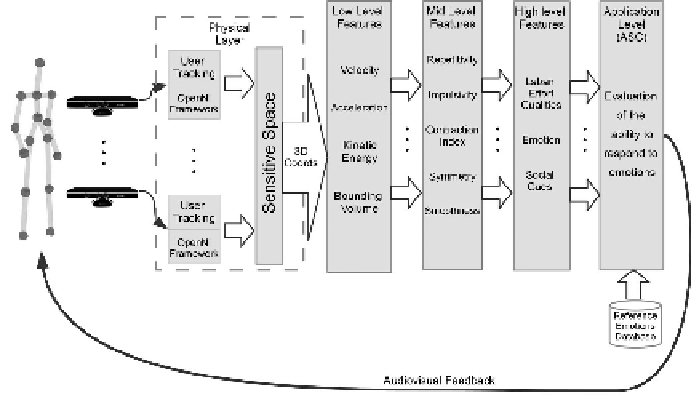Graphics Reference
In-Depth Information
That is, the computed features are used to analyze users' nonverbal
behavior, the emotions they express, and the level of social interaction.
For this purpose we use the EyesWeb XMI software platform (Camurri
et al., 2004b; Camurri et al., 2007), video cameras or Kinect sensors,
and we extract several low-level movement features (e.g., movement
energy) that are used to compute mid- and high-level features (e.g.,
impulsivity or smoothness) in a multilayered approach, possibly up to
labeling emotional states or social attitudes. The choice of these features
is motivated by previous works on the analysis of emotion using a
minimal set of features (e.g., Camurri et al., 2003; Glowinski et al., 2011).
An overview of the software architecture is sketched in Figure
2. In the following sections, we describe a subset of the proposed
framework's components. The first one is the
Physical Layer
, performing
measurements on the user's physical position in space as well as
the user's body joints configuration. The
Low-Level Features
include
those features directly describing the physical features of movements,
such as its speed, amplitude and so on. The
Mid-Level Features
can be
described by models and algorithms based on the low-level features;
for example, the movement smoothness can be computed given its
velocity and curvature.
3.1.1 Physical layer
For the purpose of the expressive gesture quality analysis described in
this case study we use one or more Kinect sensors. Kinect is a motion
sensing input device by Microsoft, originally conceived for the Xbox.
Figure 2.
Framework for multi-user nonverbal expressive gesture analysis.

Search WWH ::

Custom Search